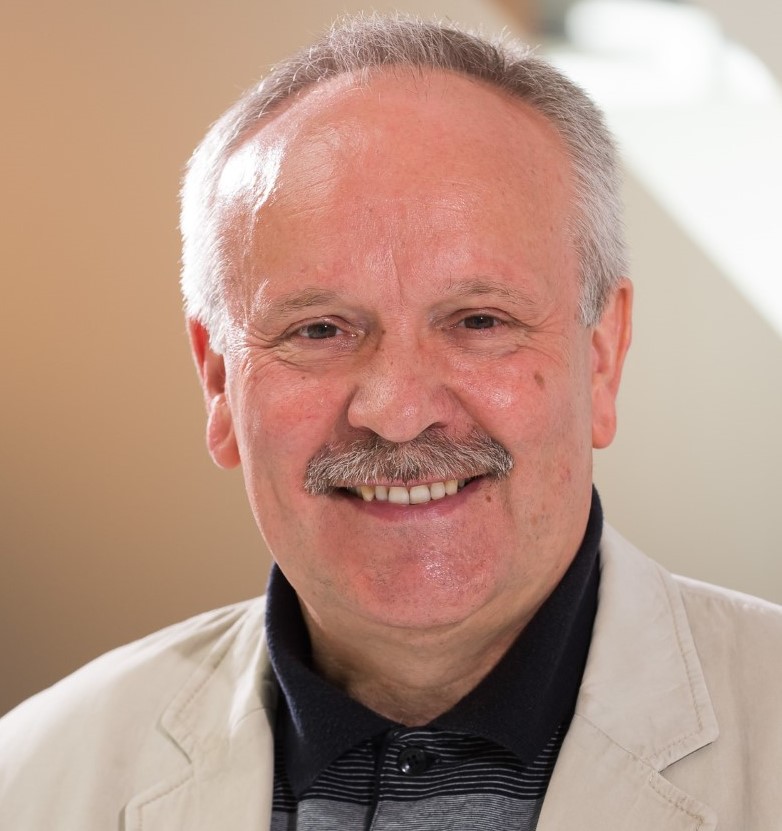Keynote Speaker

Prof. Sigitas Tamulevičius
Institute of Materials Science,Kaunas University of Technology, Lithuania
Speech Title: Production, Optical Studies and Applications of Metasurfaces
Abstract: The field of plasmonics broadly encompasses the interaction of light with metal nanostructures and, during recent years, has generated a lot of interest. Metal nanoparticles can resonate with light if their frequency matches the natural electron plasma oscillation, invoking a localized surface plasmon resonance (LSPR). This resonance can be further modified through hybridization with photonic modes when the nanoparticles are arranged in regular arrays exhibiting the collective response - surface lattice resonance (SLR). Moreover, these ultrafast processes can manifest themselves at the photonic length scale in arranged nanoparticle lattices.
In the current work the recent research results on the optical studies of colloidal solutions of silver and gold nanoparticles, production of metasurfaces (regular two-dimensional nanostructures) employing capillarity assisted particle assembly (CAPA) as well as studies of surface lattice resonance (SLR - mixed mode of LSPR and light diffraction in a regular structure) will be presented and discussed. The steady state light absorption measurements performed together with ultrafast transient pump-probe spectroscopy enabled to define spectral response as well as kinetics of the processes on the picosecond time scale. The ultrafast electron-phonon (e-ph) coupling relaxation processes for different average sizes and crystallinity of chemically synthesized silver nanoparticles were evaluated utilizing transient absorption spectroscopy. These issues are important in various fields of applications, including development of smart sensors exhibiting high sensitivity, as well as nanolasers. As an example, we present a comprehensive theoretical and experimental study of wavelength-tailored SERS substrates with improved sensitivity, exploiting surface lattice resonance in a plasmonic lattice comprised of CAPA-assembled Ag nanoparticles. Furthermore, we compared monomer and tetramer unit cell cases and found that the combined effect of tuned SLR and hot spots improves the enhancement factor more than 400 times over a substrate with a random layer of nanoparticles. The developed sensor was applied for the real-time leakage detection of electrolyte in lithium ion batteries.
Keywords: Noble metal nanoparticles, metasurfaces, surface lattice resonance
Acknowledgements: This research was performed within a project NANOTRAACES under the M-ERA.NET scheme and was funded by the Research Council of Lithuania, agreement No. MERANET-22-2,
Biography: Prof. Dr. Sigitas Tamulevičius obtained a Physics Engineer degree from the Moscow Engineering Institute of Physics (Moscow, former USSR) in 1979, a Ph.D. degree from the University of Vilnius in 1984, Doctor Habilitus degree from Kaunas University of Technology (1994). From 1990 to 1991, he was a postdoc at the Royal Institute of Technology (Stockholm, Sweden). In 1994 he was a Research Scholar, Fulbright Scholarship, Department of Physics, Massachusetts Institute of Technology (USA). Since 1996, he is a full professor in the Physics Department and Research director of the Institute of Materials Science of Kaunas University of Technology. He has co-founded a spin-off company and co-authored approx. 250 peer-reviewed publications in the field of vacuum and plasma technologies and optical technologies and spectroscopy with more than 3600 citations in Web of Science (h-index: 29), and is (co-) author of 15 textbooks on different aspects of Materials Science. Since 2002 he was a Member expert and since 2010 he is a Full Member of the Lithuanian Academy of Sciences. Prof. Sigitas Tamulevičius has received a series of awards including the Soros Foundation Research Grant, (1993) (Awarded by American Physical Society), Fulbright certificate (1997), National Award for Science (2000 and 2019), Recognition letter by the President of EMRS (2010), Honorary Professor of Southern Denmark University (2016), Laureate of Kaunas City Scientist Award (2017). He is Editor in Chief of the Scientific Journal “Materials Science (Medžiagotyra)", Member of the Editorial Board of “American Journal of Nanomaterials“ (Science and Education Publishing), “Coatings” (MDPI), member of the steering committee of European doctoral network Physics and Chemistry of Advanced Materials. He was a national representative in the FP7 program “Nanosciences, nanotechnologies, materials and new production technologies”. He headed multiple research projects funded by FP, Horizon 2020, COST, Eureka, NordForsk, Lithuanian State Foundation for Research and Studies, the Research Council, as well as Science and Innovation Agency of Lithuania. 18 Ph.D. theses were defended under his guidance; he has supervised six postdoctoral researchers.

